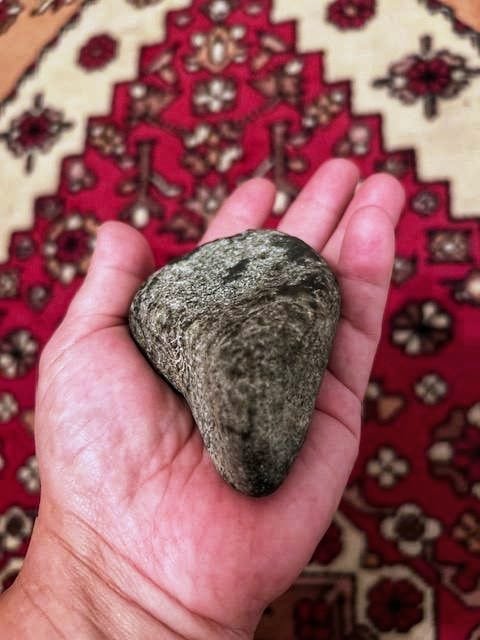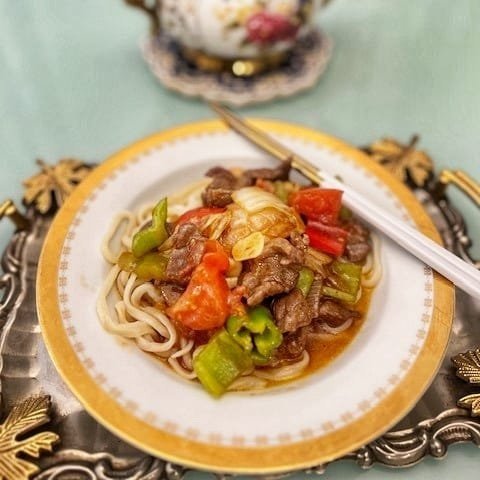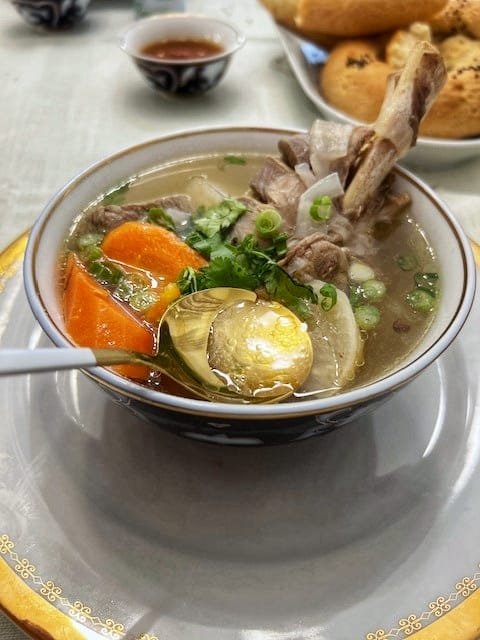Uyghur Laghman hand-pulled noodles

One of the things Gulchehra misses the most from her beloved homeland is the fresh smell of naan coming out of the tandoori ovens in the streets of Ürümchi. When she was a child, before her town was “modernized”, “every corner of the neighborhood, every street had a bread maker” she reminisces.
Gulchehra grew up in East Turkestan (also called Xinjiang Uyghur Autonomous Region), which is under the control of the Chinese Communist Party (CCP) but whose people, the Uyghurs, have more in common with their Central Asian neighbors than with the Han Chinese, the dominant ethnic group in China. Uyghurs started embracing Islam in the 10th century and most have identified as Muslims since the 16th century.
Even though publicly practicing your faith was already forbidden by the CCP when she was growing up, Gulchehra fondly remembers her grandmother keeping their traditions alive, and people secretly practicing their Dheen [Muslim way of life]. “You could not openly go to the mosque or participate in Ramadan payers like Taraweeh, but we still had Iftars… Every lftar table was like a food festival every night, so it was very exciting. We would eat with joy. Everyone would behave during the whole month, and it was an occasion to share and see all extended relatives”. She pauses and says, “Those are some of my happiest memories.”
Gulchehra’s most precious possession, a stone from her father’s garden in Ürümchi
Uyghurs have a very rich food culture, albeit largely unknown when people in the West consider Chinese cuisine. “People love to tend to their gardens, and we have many shepherds raising our meat locally” She adds with particular emphasis “Our lamb is very delicious; in fact, the best lamb I’ve ever eaten is back home”.
Gulchehra has been living in the US, far away from her loved ones and her homeland, for over 20 years. Her glowing demeanor and obvious affection for her culture is couched in a story of exile. Even though she was a famous TV personality back home, she left everything behind when, on a trip to Europe where she had uncensored internet access, she became increasingly aware of the scale of the CCP’s crimes against the native Uyghurs.
Now, as a journalist for Radio Free Asia, she works tirelessly to bring attention to the plight of the Uyghurs. It has come at a high cost. In 2018, as a result of her work, 24 members of her family were taken overnight and sent to labor camps where Uyghurs are forced to work as enslaved labor, mass sterilized, and “re-educated” to assimilate, renounce their faith, along with being forced to eat pork, drink alcohol, and not allowed to fast during Ramadan.
Defiantly, at home, she has made a point to keep Uyghur culture alive and teach her kids to speak the language. She shares her memories with them so that they don’t lose their heritage. Part of that also involves teaching them about Uyghur food and Ramadan provides her the opportunity to keep her traditions alive. “Sometimes we invite other Uyghurs or Muslim friends to our house to share our foods and pray together…. It’s a beautiful moment also to teach kids how to share, how to be grateful with what we have.”
Gulchehra shares here recipes for tea and baqqahli honey cake which are often what Uyghurs will break their fast with, along with lamb shorpa soup and naan, as well as Uyghurs’ most popular dish, Laghman hand-pulled noodles below.
Gulchehra’s memoir, A Stone is Most Precious Where it Belongs tells her extraordinary story and sheds light on China’s crimes against the Uyghurs.
To learn more about China’s crimes against Uyghurs, here are some links below:
· Who are the Uyghurs and why is China being accused of genocide?
· Chinese persecution of the Uyghurs
· 83 major brands implicated in report on forced labor of ethnic minorities in China
————
Uyghur Laghman hand-pulled noodles
Laghman is the most famous Uyghur dish. It’s a combination of pulled noodles, fried meat (lamb or beef) and seasonal vegetables with a spicy or sour sauce.
“Uyghurs eat a lot of Laghman. Every mom, girl, or wife who can make good Laghman gets a lot of pride from it”. It takes a lot of practice - Gulchehra has been working on the “noodle dance” skills since she was 14 years old.
Ingredients (for 3 servings)
For the dough:
2 cups of all-purpose flour
about 1/2 cup of cold water
2 pinches of salt
For the topping:
Lamb cut in coin size pieces (about 0.5lbs)
3x Tomatoes, cut in small squares
1x fresh hot red chili pepper, finely chopped
1x medium size onion, sliced
2x bok choy, cut up
1x red bell pepper, cut up in pieces
1x green bell pepper, cut in pieces
1.5 tbp x finely chopped ginger
5 pieces of garlic, finely chopped
2 tbs soy sauce
vegetable oil to fry and make the noodles
salt to taste
1 tsp vinegar
Directions
Gulchehra making the noodle dance
Mix all the dough ingredients in a big bowl and knead it until it is smooth. It should not be too hard or too soft, but needs elasticity to make sure you can pull it easily.
Let it set for 30min with a damp towel.
Meanwhile, cut up your vegetables and meat, ready for the frying pan
When the dough is ready, roll it into a coil -you can use oil to help you. Cover it with foil for 20min .
Heat up a layer of oil on high and add the meat.
Add the soy sauce and salt
Once the meat is browned, add the rest of the vegetables to stir fry for 2-3min
Add the vinegar and stir for 30 seconds
Add a bit of water. Once boiling, turn the heat down and let it all simmer
Meanwhile, bring a large pot of water to boil
Stretch the dough coil with the oil: hold one end between your index and thumb. Then bring your other index and thumb next to it and start stretching the dough.
The noodle dance is not easy… watch this video to learn how to do it!
Put the noodles in the pot of boiling water. Move them around with a wooden spoon to keep them separate and cook for 2-3 min.
Once the noodles are cooked, strain carefully and rinse under cold water for 10 seconds
Serve in a warm plate and top with the meat and vegetables
You can top with a sauce of your choice, such as chili garlic oil and sesame seeds or black vinegar
Enjoy!
Tip: The secret to hand-pulled noodles is the oil - it keeps the noodles from sticking.
Try to work with shorter pieces of noodles as they’re a lot easier to handle than longer pieces”. When you pull off the noodles, hit them on the table or kitchen counter as you gently stretch them.

























